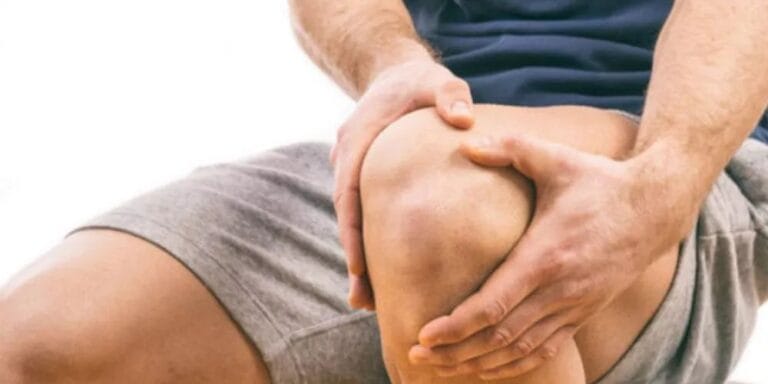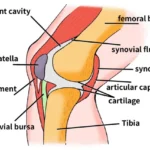Wall squats and calf stretches are among the exercises that can help ease knee pain
Is exercise good for patellofemoral pain syndrome?
Yes, exercise is one of the main treatments for PFPS. Dr. Calabrese says many factors contribute to patellofemoral pain, including:
- Muscle imbalances.
- Tight muscles.
- Excessive load on the knees from fault mechanics or overtraining.
- Physical anatomy.
You can ease PFPS by doing strengthening and stretching exercises. “Warm up your muscles first with five to seven minutes of light activity like stationary cycling or walking,” he advises.
Strengthening exercises for patellofemoral pain syndrome
Your quadriceps muscles and hip flexors are the two largest muscle groups controlling knee movement. That your quads help you straighten and bend your knees when you:
- Walk up or down stairs.
- Go from seated to standing.
- Jump and land.
And the iliotibial (IT) band runs from your hip to below your kneecap and supports your knee joint. Optimizing hip musculature is critical to reinforce the IT band’s ability to ease stress on your knees.
1. Clamshell
This exercise strengthens your gluteus medius muscle on the sides of each hip. These muscles stabilize your hips and knees.
Master the clamshell:
- Lie on your side on a mat on the floor with your legs stacked and bent to 45 degrees.
- Keep your top leg bent and open it, so your knee points to the ceiling.
- Hold this position for five seconds, then slowly lower your leg to the starting position.
- Repeat the exercise 15 times and then flip over and switch legs.
2. Wall squat
Wall squats engage and strengthen your quadriceps, hamstrings and glutes.
Master the wall squat:
- Stand with your back against a wall and your feet planted six to 12 inches away from the wall.
- Gradually slide your back down the wall until your legs are at a 45-degree angle.
- Hold this position for five to 10 seconds and then gradually rise to a standing position.
- Repeat this exercise 15 times several times a day.
Stretching exercises for patellofemoral pain syndrome
Tight hip and leg muscles can contribute to knee pain.3. Standing hip flexor and quad stretch
To prevent hip flexor and quad tightness that contributes to knee pain, make this stretch a routine part of your day.
Master the hip flexor and quad stretch:
- Stand upright with one leg bent and resting on a stable chair behind you.
- Slightly shift your weight forward at your hips.
- Squeeze your glutes and hold the stretch for 15 to 30 seconds before returning to the starting position. (You should feel a gentle stretch in front of the hip and thigh of your bent leg.)
- Perform five repetitions with the same leg before switching to the opposite leg. You may progress the bend of your trail leg as tolerated.
4. Single-leg Romanian deadlift
This exercise actively stretches your hamstrings, the thigh muscles that help bend your knees. This is an excellent lower body strengthening exercise. It actively stretches muscles while promoting stability and balance.
Master the single-leg Romanian deadlift:
- Stand with your feet shoulder-width apart.
- Shift your weight to your left leg and slightly bend your left knee.
- Bend (hinge) forward from your hip, keeping your left arm straight at your side.
- Reach your right arm toward the floor as your right leg lifts off the floor and back. Your torso should be almost parallel to the floor. (For an advanced move, hold a dumbbell or kettlebell in the hand that reaches toward the floor.)
- Push off on your left leg to bring your right leg back to the starting position.
- Perform 10 to 15 repetitions with the same leg before switching to the opposite leg.
5. Calf stretches on stairs
This exercise stretches the calf muscles in the backs of your lower legs that extend from below your knee to your ankle. This group of muscles propels you when you walk, run or jump. They’re also the reason you can flex and lock your knees and stand up straight. Tight calf muscles can pull on knee ligaments, causing pain.
Master calf stretches on stairs:
- Stand with the balls of your feet on the edge of a step.
- Slowly lower your left heel toward the floor while slightly bending your opposite leg.
- Hold the stretch for five to 10 seconds and then return to the starting position.
- Perform 10 to 15 repetitions with the same foot before switching sides.
Modifications:
- Slowly alternate pedaling your heels up and down for a more active stretch.
- Combine stretching and strengthening exercises with a calf raise. While standing on the edge of a step, drop and raise both heels up and down.
Aerobic exercises for patellofemoral pain syndrome
You can still maintain your cardiovascular fitness while recovering from PFPS. Dr. Calabrese recommends these joint-friendly aerobic activities:
- Elliptical machine.
- Swimming, water aerobics or jogging in a pool.
- Stationary or outdoor cycling at a light pace with no-hill climbs.
Rowing machine. - Upper-body ergometers (like cycling but with your arms).
- Walking outside on a flat surface or on a track or treadmill.
What exercises should you avoid when you have patellofemoral pain syndrome?
Temporarily avoid activities that put a lot of force on your knees, such as:
- Basketball, volleyball and jumping rope.
- High-impact aerobics.
- Lunges and deep squats (90 degrees or more).
- Running, especially inclines and trails.
- Stair stepper machines.
What to expect as you recover from patellofemoral pain syndrome
Take anti-inflammatory medications and apply ice to your injured knee for 20 minutes after you exercise to ease inflammation and pain. Most people who perform exercises for patellofemoral pain and temporarily modify physical activity see an improvement in three to five weeks.
But if you continue to push yourself and don’t take time to heal, recovery can take 12 weeks or longer.
Recommends seeing a healthcare provider when knee pain persists for more than 24 hours.





